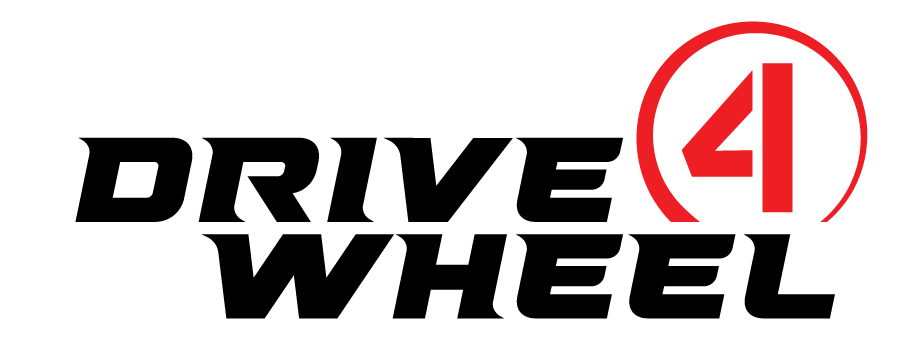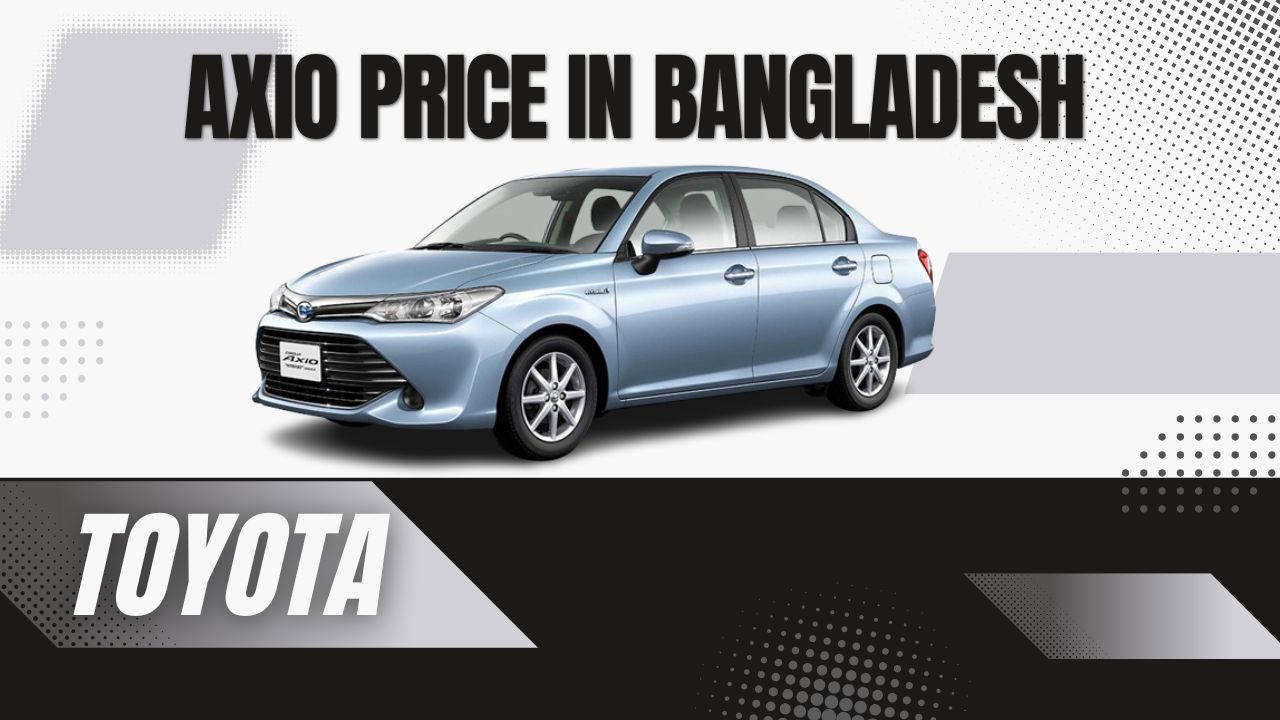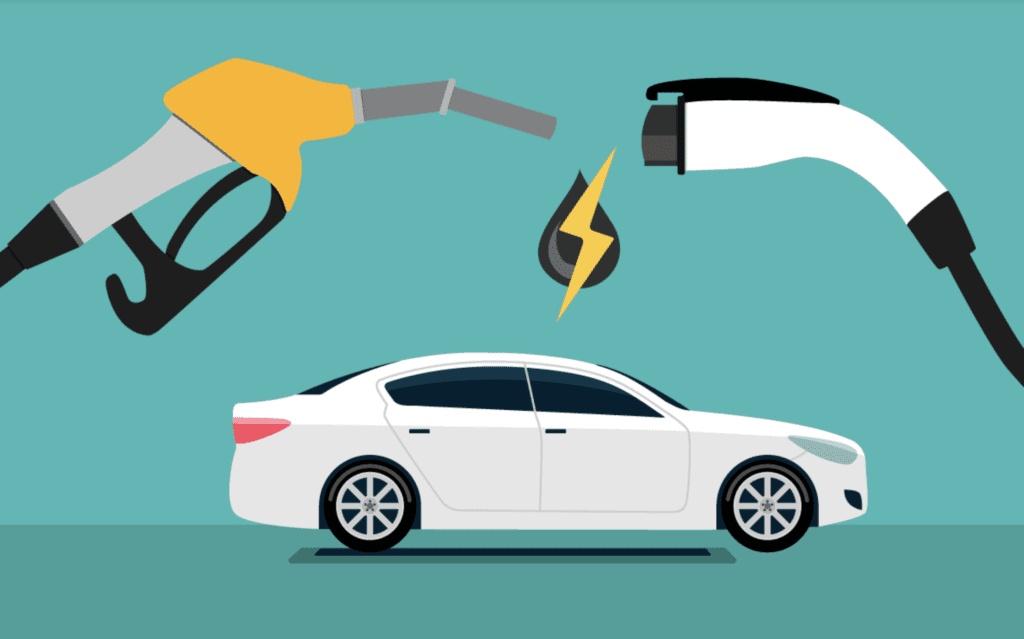Are you tired of the constant traffic jams and rising fuel prices in Bangladesh? 🚗💨 As the automotive market evolves, more and more drivers are faced with a crucial decision: hybrid or non-hybrid? This choice isn’t just about personal preference; it’s about finding the best fit for Bangladesh’s unique roads and economic landscape.
Imagine cruising through Dhaka’s bustling streets in a car that’s not only efficient but also environmentally friendly. Or picture yourself conquering rural roads with a reliable, tried-and-tested engine. The debate between hybrid and non-hybrid cars has never been more relevant for Bangladeshi drivers. But with so many factors to consider—from fuel efficiency to maintenance costs—how can you make the right choice?
In this comprehensive guide, we’ll dive deep into the world of hybrid and non-hybrid vehicles, exploring their advantages, challenges, and suitability for Bangladesh’s diverse terrain. We’ll examine the current automotive market, weigh the pros and cons of each option, and provide you with the knowledge you need to make an informed decision. So buckle up as we navigate the roadmap to finding the perfect car for Bangladesh’s roads!
Understanding Hybrid and Non-Hybrid Cars
As the automotive industry continues to evolve, consumers in Bangladesh are faced with an increasing variety of vehicle options. Two primary categories that have emerged in recent years are hybrid and non-hybrid cars. To make an informed decision about which type of car is best suited for Bangladesh’s unique driving conditions and environmental concerns, it’s essential to first understand the fundamental differences between these two technologies.
Definition of Hybrid Cars
Hybrid cars represent a significant leap forward in automotive technology, combining the benefits of traditional internal combustion engines with the efficiency of electric power. These vehicles are equipped with both a gasoline engine and an electric motor, working in tandem to propel the car forward.
The defining characteristic of a hybrid car is its ability to switch between these two power sources seamlessly. This dual-power system allows hybrid vehicles to optimize fuel efficiency and reduce emissions in various driving conditions. Here’s a breakdown of the key components found in most hybrid cars:
- Gasoline engine
- Electric motor
- Battery pack (usually lithium-ion)
- Power split device
- Regenerative braking system
Hybrid cars can be further categorized into different types:
| Hybrid Type | Description |
|---|---|
| Parallel Hybrid | The most common type, where both the engine and electric motor can drive the wheels |
| Series Hybrid | The electric motor drives the wheels, while the gasoline engine acts as a generator |
| Plug-in Hybrid (PHEV) | Can be charged from an external power source and run on electricity for longer distances |
| Mild Hybrid | Uses a small electric motor to assist the gasoline engine, but cannot run on electricity alone |
The primary advantage of hybrid cars is their improved fuel efficiency, especially in urban driving conditions where frequent starts and stops are common. This makes them an attractive option for cities like Dhaka, where traffic congestion is a significant issue.
Definition of Non-Hybrid Cars
Non-hybrid cars, also known as conventional or traditional vehicles, rely solely on an internal combustion engine for propulsion. These vehicles have been the standard in the automotive industry for over a century and continue to dominate the global market.
The main components of a non-hybrid car include:
- Internal combustion engine (gasoline or diesel)
- Transmission system
- Fuel tank
- Exhaust system
- Cooling system
Non-hybrid cars can be further classified based on their engine type:
- Gasoline engines
- Diesel engines
- Compressed Natural Gas (CNG) engines
Each of these engine types has its own set of advantages and disadvantages in terms of performance, fuel efficiency, and environmental impact.
Key Differences Between Hybrid and Non-Hybrid Cars
Understanding the distinctions between hybrid and non-hybrid vehicles is crucial for potential car buyers in Bangladesh. Here are the primary differences between these two types of cars:
- Powertrain Configuration:
- Hybrid: Combines an internal combustion engine with an electric motor
- Non-hybrid: Relies solely on an internal combustion engine
- Fuel Efficiency:
- Hybrid: Generally offers better fuel economy, especially in city driving
- Non-hybrid: Typically less fuel-efficient, particularly in stop-and-go traffic
- Environmental Impact:
- Hybrid: Produces fewer emissions due to the electric motor’s assistance
- Non-hybrid: Generally higher emissions, especially older models
- Initial Cost:
- Hybrid: Often more expensive upfront due to advanced technology
- Non-hybrid: Usually less expensive to purchase initially
- Maintenance:
- Hybrid: May require specialized maintenance for the electric components
- Non-hybrid: Simpler maintenance procedures, more widely available services
- Performance:
- Hybrid: Often provides smoother acceleration and quieter operation
- Non-hybrid: Traditional driving feel, potentially more powerful in some models
- Range and Refueling:
- Hybrid: Can offer extended range due to improved fuel efficiency
- Non-hybrid: Typically requires more frequent refueling
- Battery Life:
- Hybrid: Requires periodic battery replacement (though less frequently with newer models)
- Non-hybrid: No concerns about electric battery lifespan
- Regenerative Braking:
- Hybrid: Utilizes regenerative braking to recapture energy
- Non-hybrid: Relies on traditional braking systems
- Availability of Models:
- Hybrid: Growing selection, but still limited compared to non-hybrids
- Non-hybrid: Wide variety of models available in different sizes and styles
To illustrate these differences more clearly, let’s compare some key aspects in a table format:
| Aspect | Hybrid Cars | Non-Hybrid Cars |
|---|---|---|
| Fuel Efficiency | Higher, especially in city | Lower, especially in city |
| Emissions | Lower | Higher |
| Initial Cost | Higher | Lower |
| Maintenance Complexity | More complex | Less complex |
| Driving Range | Often longer | Typically shorter |
| Performance | Smooth acceleration | Traditional driving feel |
| Technology | More advanced | Well-established |
As we consider these differences, it’s important to note that the choice between a hybrid and non-hybrid car in Bangladesh depends on various factors, including individual driving habits, local infrastructure, and personal priorities regarding environmental impact and long-term cost savings.
The automotive landscape in Bangladesh is evolving, with an increasing focus on sustainable transportation options. While hybrid technology offers promising benefits in terms of fuel efficiency and reduced emissions, the current infrastructure and market conditions in Bangladesh also play a crucial role in determining the practicality of these vehicles.
Now that we have a clear understanding of the fundamental differences between hybrid and non-hybrid cars, we can explore how these characteristics align with the specific needs and challenges of the Bangladesh automotive market. This knowledge will serve as a foundation for evaluating which type of car might be best suited for the country’s unique driving conditions and environmental concerns.
The Bangladesh Automotive Market
As we delve into the automotive landscape of Bangladesh, it’s crucial to understand the current market dynamics, the popularity of different vehicle types, and the regulatory environment shaping consumer choices. This section will provide a comprehensive overview of these factors, helping you make an informed decision when considering a hybrid or non-hybrid vehicle for Bangladesh’s roads.
Current Car Market Trends
The automotive market in Bangladesh has been experiencing significant growth and transformation in recent years. Several key trends are shaping the industry:
- Increasing Demand: With a growing middle class and rising disposable incomes, the demand for personal vehicles has been steadily increasing.
- Shift towards Fuel Efficiency: As fuel prices continue to fluctuate, consumers are increasingly prioritizing fuel-efficient vehicles.
- Growing Interest in Technology: Modern car buyers in Bangladesh are showing a keen interest in vehicles equipped with advanced technologies.
- Urbanization Impact: The rapid urbanization in major cities like Dhaka and Chittagong is influencing car buying decisions, with a preference for compact and easy-to-maneuver vehicles.
- Used Car Market Growth: The pre-owned car market is expanding, offering more affordable options for first-time car buyers.
Let’s take a closer look at the market share of different vehicle types in Bangladesh:
| Vehicle Type | Market Share (%) |
|---|---|
| Sedans | 35% |
| SUVs | 25% |
| Hatchbacks | 20% |
| MPVs | 15% |
| Others | 5% |
This distribution reflects the diverse needs and preferences of Bangladeshi consumers, with sedans and SUVs dominating the market.
Popularity of Hybrid vs Non-Hybrid Vehicles
The debate between hybrid and non-hybrid vehicles has gained significant traction in Bangladesh’s automotive market. While non-hybrid vehicles still dominate the roads, hybrid cars are steadily gaining popularity. Here’s a breakdown of the factors influencing their respective popularity:
Hybrid Vehicles:
- Fuel Efficiency: With rising fuel costs, the superior fuel economy of hybrid vehicles is a major draw for cost-conscious consumers.
- Environmental Awareness: As environmental concerns grow, more buyers are opting for hybrids due to their lower emissions.
- Tax Incentives: Government policies offering tax breaks for hybrid vehicles have made them more attractive to potential buyers.
- Status Symbol: Owning a hybrid car is increasingly seen as a status symbol, associated with environmental consciousness and technological sophistication.
Non-Hybrid Vehicles:
- Lower Initial Cost: Traditional non-hybrid vehicles generally have a lower purchase price, making them more accessible to a broader range of consumers.
- Familiarity: Many Bangladeshi drivers are more comfortable with conventional engines, which influences their buying decisions.
- Wider Range of Options: The non-hybrid market offers a broader selection of models, sizes, and price points.
- Established Maintenance Infrastructure: The existing network of mechanics and spare parts for non-hybrid vehicles is more extensive and well-established.
Despite the growing interest in hybrid vehicles, non-hybrid cars still maintain a significant market share due to these factors. However, the gap is gradually narrowing as more consumers become aware of the long-term benefits of hybrid technology.
Government Policies Affecting Car Choices
Government policies play a crucial role in shaping the automotive market in Bangladesh. These policies have a direct impact on consumer choices between hybrid and non-hybrid vehicles:
- Import Duties: The government has implemented differential import duties for hybrid and non-hybrid vehicles. Hybrid cars enjoy lower import taxes, making them more competitively priced.
- Environmental Regulations: Stricter emission standards are being phased in, favoring hybrid and other low-emission vehicles.
- Tax Incentives: There are tax breaks and incentives for purchasing and owning hybrid vehicles, aimed at promoting cleaner transportation options.
- Fuel Pricing Policies: Government control over fuel prices indirectly influences the attractiveness of fuel-efficient hybrid vehicles.
- Infrastructure Development: Policies supporting the development of charging infrastructure for electric and plug-in hybrid vehicles are slowly being implemented.
Here’s a comparison of some key policy aspects affecting hybrid and non-hybrid vehicles:
| Policy Aspect | Hybrid Vehicles | Non-Hybrid Vehicles |
|---|---|---|
| Import Duty | Lower | Higher |
| Road Tax | Reduced | Standard |
| Emission Standards | More lenient | Stricter |
| Fuel Subsidy | Less benefit | More benefit |
These policies are designed to encourage the adoption of more environmentally friendly vehicles while balancing the needs of the existing automotive market.
As we move forward, it’s important to note that the Bangladesh automotive market is in a state of flux. The growing interest in hybrid technology, coupled with evolving government policies, is gradually reshaping consumer preferences. However, the transition is not without challenges.
The infrastructure for hybrid and electric vehicles is still in its nascent stages, which can be a deterrent for some buyers. Additionally, the higher upfront costs of hybrid vehicles, despite long-term savings, remain a significant consideration for many Bangladeshi consumers.
Moreover, the market is also influenced by global automotive trends. The increasing focus on electric vehicles (EVs) worldwide is beginning to have ripple effects in Bangladesh. While fully electric vehicles are still rare on Bangladeshi roads, they represent a future trend that both consumers and policymakers are keeping an eye on.
In conclusion, the Bangladesh automotive market is at a crossroads. While non-hybrid vehicles continue to dominate due to their affordability and familiarity, hybrid vehicles are steadily gaining ground. Government policies are playing a crucial role in this shift, but consumer education and infrastructure development will be key to accelerating the adoption of more sustainable transportation options.
Now that we have a clear picture of the automotive market in Bangladesh, let’s explore the specific advantages that hybrid cars offer in this unique context.
Advantages of Hybrid Cars in Bangladesh
Now that we’ve explored the Bangladesh automotive market, let’s delve into the numerous advantages that hybrid cars offer in this rapidly developing nation. As Bangladesh continues to grow and modernize, the benefits of hybrid vehicles become increasingly apparent, making them an attractive option for many consumers.
A. Fuel efficiency and cost savings
One of the most significant advantages of hybrid cars in Bangladesh is their superior fuel efficiency, which translates to substantial cost savings for owners. Hybrid vehicles combine a traditional internal combustion engine with an electric motor, allowing them to optimize fuel consumption in various driving conditions.
In urban areas like Dhaka, where traffic congestion is a major issue, hybrid cars truly shine. During stop-and-go traffic, the electric motor takes over, reducing fuel consumption and emissions. When higher speeds are needed, the gasoline engine kicks in, providing the necessary power while still maintaining excellent fuel economy.
Let’s compare the fuel efficiency of popular hybrid and non-hybrid models available in Bangladesh:
| Vehicle Model | Type | Fuel Efficiency (km/l) |
|---|---|---|
| Toyota Prius | Hybrid | 25-30 |
| Honda Vezel | Hybrid | 20-25 |
| Toyota Corolla | Non-Hybrid | 12-15 |
| Honda City | Non-Hybrid | 14-16 |
As we can see, hybrid models offer significantly better fuel efficiency, often doubling the kilometers traveled per liter of fuel compared to their non-hybrid counterparts. This increased efficiency leads to substantial savings at the pump, especially considering the rising fuel prices in Bangladesh.
For example, let’s calculate the potential yearly savings for a driver in Dhaka who travels 15,000 km annually:
- Hybrid car (Toyota Prius): 15,000 km ÷ 25 km/l = 600 liters of fuel consumed
- Non-hybrid car (Toyota Corolla): 15,000 km ÷ 13 km/l = 1,154 liters of fuel consumed
Assuming a fuel price of 89 taka per liter, the annual fuel cost would be:
- Hybrid: 600 liters × 89 taka = 53,400 taka
- Non-hybrid: 1,154 liters × 89 taka = 102,706 taka
This results in an annual savings of 49,306 taka, a significant amount for the average Bangladeshi consumer.
B. Environmental benefits
As Bangladesh faces increasing environmental challenges, including air pollution and climate change, the adoption of hybrid cars can play a crucial role in reducing the country’s carbon footprint. Hybrid vehicles emit significantly less CO2 and other harmful pollutants compared to traditional gasoline-powered cars.
The environmental benefits of hybrid cars in Bangladesh include:
- Reduced greenhouse gas emissions
- Lower levels of particulate matter and nitrogen oxides
- Decreased dependence on fossil fuels
- Improved air quality in urban areas
These environmental advantages are particularly important in densely populated cities like Dhaka, where air pollution has become a major health concern. By choosing hybrid vehicles, Bangladeshi consumers can contribute to a cleaner, healthier environment for themselves and future generations.
C. Tax incentives and import benefits
The Bangladesh government has recognized the potential of hybrid vehicles to address environmental and energy concerns. As a result, they have implemented several tax incentives and import benefits to encourage the adoption of hybrid cars in the country. These incentives make hybrid vehicles more accessible and affordable for Bangladeshi consumers.
Some of the key tax incentives and import benefits for hybrid cars in Bangladesh include:
- Reduced import duty: Hybrid cars enjoy a lower import duty compared to conventional vehicles, making them more competitively priced in the market.
- Lower supplementary duty: The government has reduced the supplementary duty on hybrid cars, further decreasing their overall cost.
- Decreased registration fees: Some local authorities offer reduced registration fees for hybrid vehicles, providing additional savings for owners.
- Potential VAT exemptions: Discussions are ongoing about potential Value Added Tax (VAT) exemptions for hybrid cars, which could further reduce their cost.
These incentives not only make hybrid cars more affordable but also demonstrate the government’s commitment to promoting cleaner transportation options in Bangladesh.
D. Reduced maintenance costs
Another significant advantage of hybrid cars in Bangladesh is their lower maintenance costs compared to traditional non-hybrid vehicles. Several factors contribute to these reduced expenses:
- Regenerative braking: Hybrid cars use regenerative braking systems, which reduce wear on brake pads and rotors. This results in less frequent brake replacements and lower maintenance costs.
- Smaller engine size: Most hybrid cars have smaller, more efficient engines that experience less wear and tear, leading to longer engine life and reduced maintenance needs.
- Less frequent oil changes: Due to the reduced load on the gasoline engine, hybrid cars typically require less frequent oil changes, saving both time and money for owners.
- Longer-lasting batteries: Modern hybrid car batteries are designed to last the lifetime of the vehicle, reducing the need for expensive battery replacements.
- Simpler transmission systems: Many hybrid cars use continuously variable transmissions (CVTs), which have fewer moving parts and require less maintenance than traditional automatic transmissions.
To illustrate the potential maintenance cost savings, let’s compare the average annual maintenance costs for hybrid and non-hybrid vehicles in Bangladesh:
| Maintenance Item | Hybrid Car (Taka) | Non-Hybrid Car (Taka) |
|---|---|---|
| Oil changes | 3,000 | 6,000 |
| Brake service | 2,500 | 5,000 |
| Engine tune-up | 4,000 | 6,000 |
| Transmission service | 3,500 | 5,500 |
| Total | 13,000 | 22,500 |
As we can see, hybrid car owners can potentially save around 9,500 taka annually on maintenance costs alone. Over the lifetime of the vehicle, these savings can add up to a significant amount.
In conclusion, hybrid cars offer numerous advantages for Bangladeshi consumers, including impressive fuel efficiency, substantial cost savings, environmental benefits, tax incentives, and reduced maintenance expenses. These benefits make hybrid vehicles an increasingly attractive option for those looking to purchase a new car in Bangladesh. As we move forward, it’s important to consider the potential drawbacks and limitations of hybrid technology, which we’ll explore in the next section.
Making the Right Choice for Bangladesh’s Roads
Now that we’ve explored the advantages and challenges of both hybrid and non-hybrid vehicles in the context of Bangladesh, it’s time to focus on making the right choice for the country’s unique road conditions and infrastructure. This decision is crucial, as it not only affects individual drivers but also has broader implications for the nation’s environmental sustainability and economic growth.
Assessing Personal Needs and Priorities
When deciding between a hybrid and non-hybrid vehicle in Bangladesh, it’s essential to start by evaluating your personal needs and priorities. This assessment will help you make an informed decision that aligns with your lifestyle and requirements.
Factors to Consider:
- Daily commute distance
- Typical driving conditions (urban vs. rural)
- Budget constraints
- Environmental concerns
- Desired features and comfort level
To help you visualize these factors, consider the following comparison table:
| Factor | Hybrid Advantage | Non-Hybrid Advantage |
|---|---|---|
| Fuel efficiency | Higher, especially in city driving | Better for long highway drives |
| Initial cost | Generally higher | Usually lower |
| Maintenance | Can be more complex and costly | Simpler and more familiar |
| Environmental impact | Lower emissions | Depends on driving habits |
| Performance | Smooth acceleration, quieter | Traditional driving experience |
By carefully weighing these factors against your personal needs, you can begin to form a clearer picture of which type of vehicle might be best suited for you.
Evaluating Local Infrastructure and Support
The choice between hybrid and non-hybrid vehicles in Bangladesh is significantly influenced by the local infrastructure and support systems available. This aspect is crucial, as it can greatly impact your ownership experience and the practicality of your chosen vehicle.
Key Infrastructure Considerations:
- Availability of charging stations for plug-in hybrids
- Quality and reliability of the power grid
- Accessibility of specialized mechanics for hybrid vehicles
- Availability of spare parts for both hybrid and non-hybrid models
- Road conditions and their impact on different vehicle types
It’s important to note that while Bangladesh is making strides in improving its infrastructure, there are still challenges to overcome. For instance, the availability of charging stations for plug-in hybrids is currently limited, which may make fully electric or plug-in hybrid vehicles less practical for some users.
On the other hand, the country’s growing network of CNG stations can be advantageous for non-hybrid vehicles equipped with CNG conversion kits, which are popular in Bangladesh due to their cost-effectiveness and lower emissions compared to traditional petrol engines.
Considering Long-term Ownership Costs
When making a decision between hybrid and non-hybrid vehicles, it’s crucial to look beyond the initial purchase price and consider the total cost of ownership over the vehicle’s lifespan. This approach provides a more accurate picture of the financial implications of your choice.
Long-term Cost Factors:
- Fuel efficiency and costs
- Maintenance and repair expenses
- Insurance premiums
- Resale value
- Potential government incentives or tax breaks
Let’s break down these factors in more detail:
- Fuel Efficiency and Costs: Hybrid vehicles generally offer better fuel economy, especially in city driving conditions. This can lead to significant savings over time, particularly if fuel prices rise. However, the actual savings will depend on your driving habits and the local fuel prices in Bangladesh.
- Maintenance and Repair Expenses: Hybrid vehicles often have more complex systems, which can lead to higher maintenance costs, especially as the vehicle ages. However, they may also require less frequent maintenance for certain components, such as brake pads, due to regenerative braking systems. Non-hybrid vehicles, on the other hand, have simpler technology that local mechanics are more familiar with, potentially leading to lower repair costs.
- Insurance Premiums: Insurance costs can vary between hybrid and non-hybrid vehicles. In some cases, hybrids may have higher premiums due to their more expensive components. However, this can vary by insurance provider and specific model.
- Resale Value: The resale value of hybrid vehicles in Bangladesh is an important consideration. While hybrids may depreciate differently than non-hybrids, the market for used hybrids in Bangladesh is still developing. This could affect your ability to sell the vehicle in the future.
- Government Incentives: Keep an eye on potential government incentives or tax breaks for eco-friendly vehicles. While these may be limited in Bangladesh currently, future policies could favor hybrid or electric vehicles, potentially offsetting some of the higher initial costs.
To illustrate the potential long-term cost differences, consider this simplified example:
| Cost Factor | Hybrid (5-year estimate) | Non-Hybrid (5-year estimate) |
|---|---|---|
| Initial Cost | ৳2,500,000 | ৳2,000,000 |
| Fuel Costs | ৳300,000 | ৳500,000 |
| Maintenance | ৳200,000 | ৳150,000 |
| Insurance | ৳150,000 | ৳125,000 |
| Resale Value | -৳1,000,000 | -৳800,000 |
| Total Cost | ৳2,150,000 | ৳1,975,000 |
This example demonstrates that while the hybrid has a higher initial cost, the fuel savings over time can help offset this difference. However, actual costs will vary based on specific models, driving habits, and market conditions in Bangladesh.
Balancing Performance and Sustainability
The final consideration in choosing between hybrid and non-hybrid vehicles for Bangladesh’s roads is striking the right balance between performance and sustainability. This balance is crucial, as it affects not only your driving experience but also your impact on the environment and the overall sustainability of the country’s transportation sector.
Performance Aspects:
- Acceleration and top speed
- Handling and stability
- Comfort and noise levels
- Towing capacity (if relevant)
- Adaptability to different road conditions
Sustainability Factors:
- Fuel consumption and efficiency
- Emissions levels
- Use of sustainable materials in manufacturing
- Longevity and durability of the vehicle
- End-of-life recyclability
When considering performance, it’s important to note that modern hybrid vehicles have made significant strides in closing the gap with traditional non-hybrid cars. Many hybrids now offer comparable acceleration and top speeds, with the added benefit of instant torque from electric motors, which can be particularly useful in city driving conditions.
However, non-hybrid vehicles still often have an edge when it comes to high-performance driving or heavy-duty tasks like towing. They also tend to be more familiar in terms of driving feel and maintenance, which can be an important factor for many drivers in Bangladesh.
On the sustainability front, hybrid vehicles clearly have an advantage in terms of fuel efficiency and emissions, particularly in urban environments where stop-and-go traffic is common. This can contribute significantly to reducing air pollution in cities like Dhaka, where air quality is a major concern.
That said, the overall environmental impact of a vehicle goes beyond just its emissions during use. The manufacturing process, including the production of batteries for hybrid vehicles, also has environmental implications. Additionally, the source of electricity used to charge plug-in hybrids (if applicable) affects their overall environmental footprint.
To make an informed decision, consider the following questions:
- How important is fuel efficiency in your daily driving?
- Are you willing to adapt to a slightly different driving experience for the sake of sustainability?
- How do you prioritize environmental impact versus performance in your vehicle choice?
- Are you prepared to potentially pay a premium for more advanced, sustainable technology?
- How well does the vehicle’s performance match the typical road conditions you encounter in Bangladesh?
By carefully considering these factors and balancing them against your personal needs and the realities of Bangladesh’s infrastructure, you can make an informed decision on whether a hybrid or non-hybrid vehicle is the best choice for you.
As we conclude this section, it’s clear that the decision between hybrid and non-hybrid vehicles in Bangladesh is not a one-size-fits-all solution. It requires careful consideration of personal needs, local infrastructure, long-term costs, and the balance between performance and sustainability. By taking all these factors into account, you can make a choice that not only serves your individual needs but also contributes positively to Bangladesh’s automotive future.




